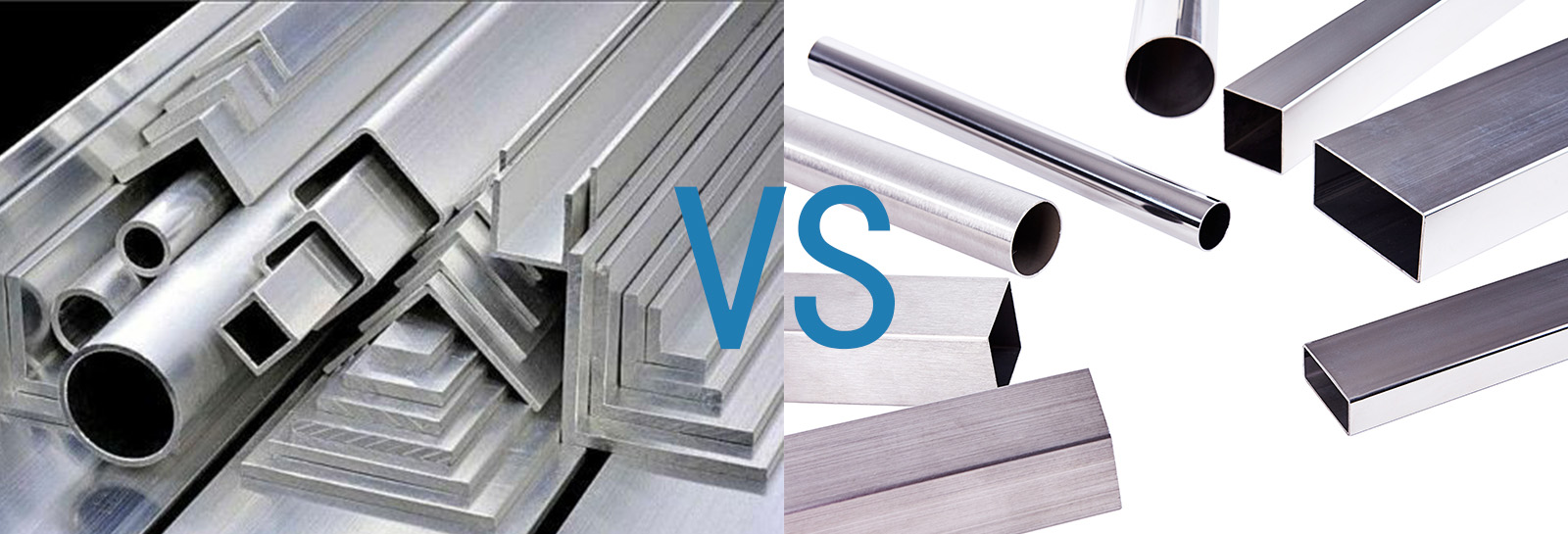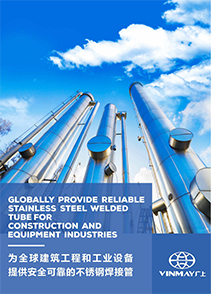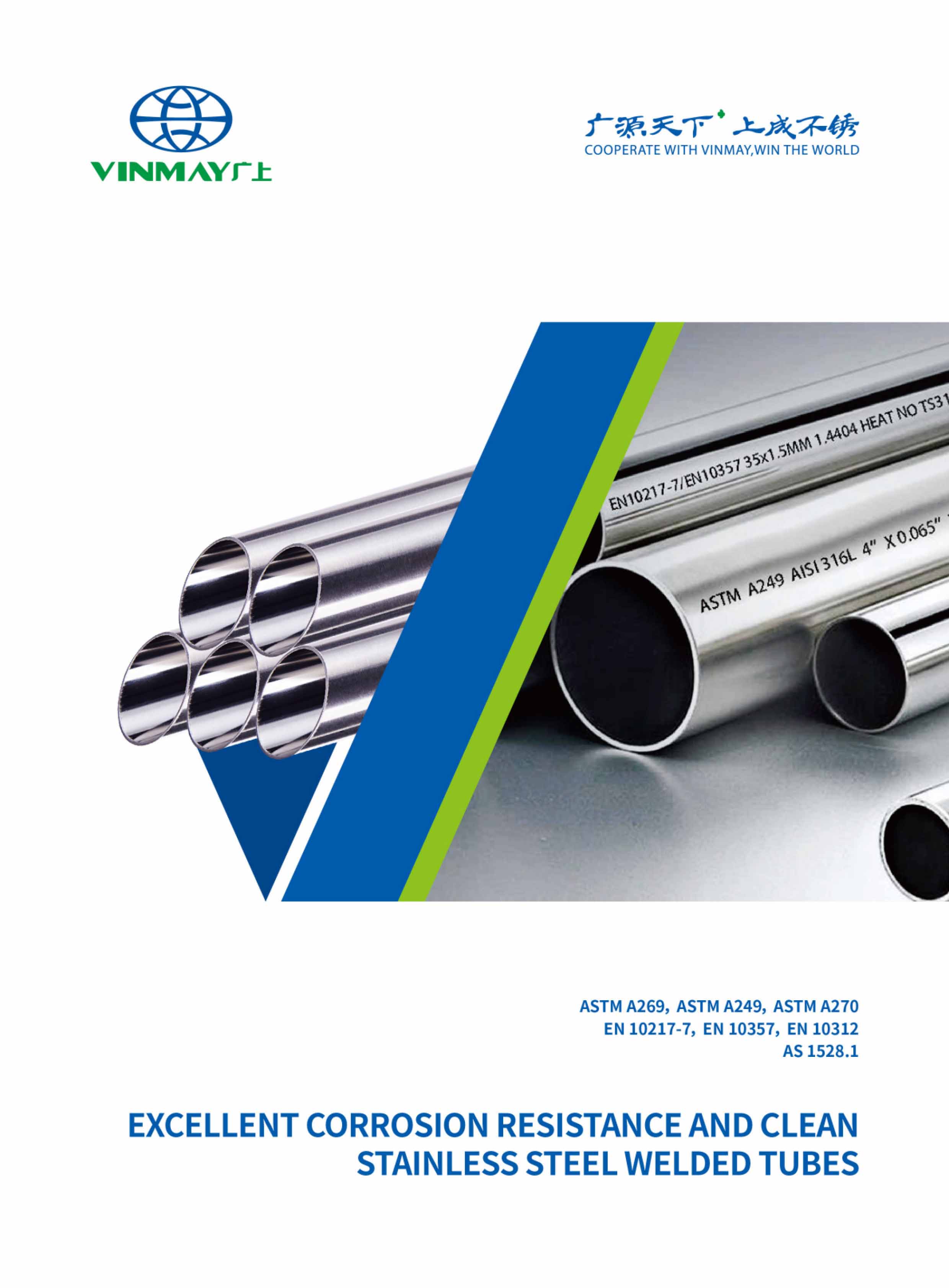The comparison between stainless steel tubes and aluminum tubes presents a multifaceted decision-making process that hinges on various critical factors such as strength, weight, and cost-effectiveness. Stainless steel, known for its exceptional durability and resistance to corrosion, often finds applications in rigorous environments that demand reliability. In contrast, aluminum offers advantages in weight and malleability, making it suitable for projects requiring intricate designs. As we explore the nuances of each material's properties and applications, the implications of your choice may become more significant than initially anticipated.

When evaluating the strength characteristics of stainless steel tube vs aluminum tube, it is essential to consider their respective tensile strengths, yield points, and overall structural integrity under varying load conditions.
The tensile strength comparison reveals that stainless steel typically exhibits a higher tensile strength, making it more suitable for applications requiring enhanced load bearing capacity. This property is critical in industries such as construction and aerospace, where structural integrity evaluation is paramount.
An impact resistance analysis further distinguishes these materials; stainless steel generally demonstrates superior resistance to impact forces, reducing the likelihood of sudden failure. Conversely, aluminum may suffer from fatigue failure assessment, particularly under cyclic loading conditions. Its lower yield strength can lead to premature deformation and potential failure in high-stress environments.
Additionally, the structural integrity evaluation of both materials under extreme conditions highlights stainless steel's robustness, as it maintains its properties over a wider range of temperatures and environmental influences.
In applications where longevity and reliability are essential, these characteristics must be thoroughly considered. Ultimately, understanding the inherent strengths of stainless steel tube vs aluminum tube is crucial for selecting the appropriate material for specific engineering applications.
Building on the discussion of strength characteristics, the strength-to-weight ratio of stainless steel tubes compared to aluminum tubes plays a significant role in material selection for various applications. This ratio is critical in determining the performance metrics that influence engineering choices, especially in structural applications where both strength and weight are pivotal factors.
The following aspects highlight the strength-to-weight comparison between these materials:
Material Density: Stainless steel has a higher density than aluminum , which affects the overall weight in structural designs.
Yield Strength: Stainless steel typically exhibits greater yield strength, allowing for thinner walls without structural designs.
Weight Analysis: Aluminum's lower density affords significant weight savings in applications where reducingd mass is essential , such as aerospace or automotive sectors.
Fatigue Resistance: Stainless steel generally offers better fatigue resistance,which can enchance longevity in dynamic loading conditions
When evaluating these factors, engineers must carefully assess the strength comparison and weight analysis to make informed decisions regarding the most suitable material for specific structural applications.
This analysis ensures optimal performance while maintaining safety and efficiency.
How do the costs of stainless steel tubes compare to those of aluminum tubes, and what implications do these differences have for budget-conscious projects? The price comparison reveals that stainless steel tubes generally have higher initial manufacturing costs than their aluminum counterparts. However, the long-term investment potential of stainless steel can offer superior cost efficiency due to its durability and lower maintenance requirements.
| Material | Average Cost per Unit | Lifespan (Years) |
|---|---|---|
| Stainless Steel | $2.50 - $5.00 | 20-30 |
| Aluminum | $1.50 - $3.00 | 10-15 |
Market trends indicate that while aluminum may be favored for projects with tight budgets, the lower manufacturing costs do not always equate to overall savings. Stainless steel's longevity can mitigate replacement costs and enhance project viability over time. Therefore, project planners must carefully evaluate both initial expenses and long-term implications when selecting materials to ensure optimal cost efficiency.
Corrosion resistance is a critical factor in the selection of stainless steel tube vs aluminum tube, as each material exhibits distinct properties that influence their performance in various environments.
Stainless steel demonstrates superior corrosion resistance, primarily due to its chromium content, which forms a passive oxide layer that protects the underlying metal. In contrast, aluminum is susceptible to corrosion under certain conditions, although it can form a protective oxide layer that offers some resistance.
When considering corrosion resistance in applications, several factors should be evaluated:
Surface Treatment: Stainless steel often requires minimal surface treatment, while aluminum may need anodizing or other coatings for enhanced durability.
Environental Impact: Stainless Steel is more effective in harsh environments , such as coastal areas, wehre salt and humidity are prevalent.
Maintenance Requirements: Stainless steel requires less maintenance over time, while aluminum may necessitate periodic inspections and treatments.
Longevity Comparisionl: Stainless steel tube tend to have a longer lifespan in corrosive environments compared to aluminum tubes
Read More :
The Life Expectancy of 316 Stainless Steel
The Life Expectancy of 304 Stainless Steel
When evaluating the properties of stainless steel tube vs aluminum tube, electrical conductivity becomes a significant factor, particularly in applications requiring efficient energy transfer or signal transmission.
The conductivity comparison between these two materials reveals that aluminum exhibits superior electrical and thermal conductivity. Aluminum's electrical conductivity is approximately 61% of that of copper, making it a preferred choice for electrical applications, while stainless steel has considerably lower electrical conductivity, often around 3% of copper's.
In terms of thermal conductivity, aluminum also outperforms stainless steel, which is critical in applications involving heat exchange or dissipation. This disparity is illustrated through conductivity measurement, where aluminum tubes can effectively dissipate heat, enhancing performance in thermal systems.
Conductivity applications for aluminum tubes include electrical wiring, heat exchangers, and components in electronic devices, where efficient energy transfer is paramount.
Conversely, stainless steel tubes, while possessing lower conductivity, offer advantages in strength and corrosion resistance, making them suitable for environments where mechanical properties and durability outweigh the need for conductivity.
Ultimately, the choice between stainless steel and aluminum tubes will depend on the specific requirements of the application, balancing conductivity with other material properties.
Malleability, a critical property influencing the fabrication and application of materials, varies significantly between stainless steel and aluminum tubes, with aluminum exhibiting superior malleability that facilitates easier shaping and forming processes.
This malleability comparison highlights essential flexibility differences between these two metals, leading to distinct advantages in various industrial applications.
The following points summarize the malleability characteristics of stainless steel and aluminum tubes:
Aluminum Tubes: Exhibit high malleability, allowing for extensive deformation without fracture, ideal for intricate designs.
Stainless Steel Tubes: Generally posses lower malleability, making them less suitable for applications requiring complex shapes.
Processing Techniques: Aluminum;s malleability allows for techniques like extrusion and deep drawing, enhancing its versatility in production.
Alloy Variations: Differenct aluminum alloys can be engineered to optimize malleability , tailoring properties for specific industrial demands.
How do the durability characteristics of stainless steel tube vs aluminum tube in demanding environments? In performance comparison, stainless steel exhibits superior strength and resistance to corrosion, making it ideal for harsh conditions. Conversely, aluminum, while lighter and more malleable, may suffer from fatigue under repetitive stress.
The following table highlights key attributes affecting durability:
| Attribute | Stainless Steel Tubes | Aluminum Tubes |
|---|---|---|
| Environmental Impact | Low (corrosion-resistant) | Moderate (oxidation) |
| Maintenance Requirements | Low (minimal upkeep) | Moderate (more frequent) |
| Thermal Expansion | Lower coefficient | Higher coefficient |
Stainless steel's aesthetic appeal often remains intact longer due to its resistance to rust and tarnish. However, aluminum tubes may require more frequent maintenance to combat environmental effects, impacting their long-term durability. Additionally, the higher thermal expansion rate of aluminum can lead to dimensional instability in fluctuating temperatures. Ultimately, the choice between these materials should consider application-specific requirements, including strength, maintenance, and environmental conditions.
The differences in durability between stainless steel tube vs aluminum tube also influence their suitability for various secondary operations, including welding, machining, and surface treatments. Understanding these differences is critical for selecting appropriate fabrication techniques and optimizing the performance of the final product.
Welding: Stainless steel generally offers superior weldability compared to aluminum , particularly in high stess applications. The heat treatment process can affect the properties of both matrial, requiring careful consideration during welding.
Learn More:
Stainless Steel Pipe Welding Standards: Key Guidelines
Machining: Aluminum is easier to machine due to its softer nature, allowing for faster machining process with less tool wear. Conversely, stainless steel typically demands more robust toolingand slower speeds.
Surface Finishes: The choice of surface finishes varies significantly between materials. Stainless steel can achieve a more durable finish through processes like passivation, while aluminum may require anodizing to enhance corrosion resistance.
Joining Methods: Different joining methods are recommended for each material; for instance , mechanical fastening is often preferred for aluminum , while stainless steel may be joined effectively through welding or brazing.
Read More: Precision Stainless Steel Tubing Fabrication Solutions
Ultimately, the choice of secondary operations is fundamentally shaped by the inherent properties of the materials involved.
Various grades of stainless steel tube are available, each tailored to specific applications that leverage their unique properties, such as corrosion resistance, strength, and ease of fabrication.
Among the most common grades, 304 and 316 stainless steel are frequently utilized in industries requiring high corrosion resistance, such as food processing and marine applications. The 304 stainless steel tube offers excellent weldability and formability, making it suitable for a variety of stainless steel tube manufacturing processes, while 316 stainless steel is specifically designed for environments with higher chloride exposure.
Another notable grade, 430 stainless steel, is often used in automotive applications and kitchenware due to its moderate corrosion resistance and affordability. These grades adhere to stringent industry standards, ensuring reliability and performance in diverse applications.
In contrast, aluminum tube uses typically emphasize lightweight characteristics and thermal conductivity, making them ideal for aerospace and automotive sectors. However, the environmental impact of aluminum production raises concerns compared to stainless steel, which often has a longer lifecycle and can be recycled effectively.
Consequently, selecting the appropriate stainless steel grade depends on balancing stainless steel properties with application requirements while considering sustainability factors.
You may also like:
Top Stainless Steel Pipe Applications in Various Industries
Malleability varies significantly between stainless steel and aluminum, with aluminum exhibiting a greater capacity for deformation under stress due to its softer and more ductile nature. This malleability comparison highlights the differences in material flexibility and ductility properties, which are crucial for various applications in metal forming.
When comparing the electrical conductivity of stainless steel tube vs aluminum tube, it is evident that aluminum significantly outperforms stainless steel due to its higher conductivity properties. The electrical conductivity comparison reveals that aluminum exhibits approximately 60% higher conductivity than stainless steel, making it a preferred choice in various applications in electronics.
Conductivity measurement techniques, such as four-point probe and eddy current methods, are often employed to assess the conductivity of these materials accurately. The advantages of conductivity in aluminum include lower resistive losses, enhanced energy efficiency, and reduced heat generation, which are critical in electronic applications where performance is paramount.
Factors affecting conductivity, such as alloy composition, temperature, and mechanical stress, can further influence the performance of both materials. While stainless steel provides certain benefits, such as corrosion resistance and mechanical strength, its conductivity limitations make it less suitable for high-performance electrical components compared to aluminum.
Welding stainless steel and aluminum presents significant challenges due to their differing physical properties and compatibility issues. The primary concern lies in their melting points; aluminum melts at a much lower temperature than stainless steel, necessitating specialized welding techniques to avoid distortion or damage.
When attempting to join these materials, careful consideration of joint designs is critical. Common approaches include the use of butt joints or lap joints, but the effectiveness often depends on the application and desired strength. Additionally, the selection of appropriate filler materials is crucial, as conventional fillers may not provide the necessary mechanical properties or corrosion resistance.
Heat treatment can also play a vital role in the welding process. Post-weld heat treatment may be required to relieve stresses and improve the overall integrity of the joint. However, caution is needed, as excessive heat can adversely affect the aluminum's properties, leading to issues such as softening.
Ultimately, while it is possible to weld stainless steel and aluminum, it requires meticulous planning and execution to achieve durable and reliable joints, especially when considering the specific demands of the application and environmental factors.
Understanding the magnetic properties of materials such as stainless steel tube vs aluminum tube is important, especially in applications where magnetic interference could pose challenges. The magnetic characteristics of these materials significantly influence their selection for various magnetic applications.
Stainless Steel: Generally, stainless steel is categorized into two types: ferromagnetic and non-ferromagnetic. The austenitic grades (e.g., 304, 316) are typically non-magnetic, while some ferritic and martensitic grades exhibit ferromagnetic properties.
Aluminum: Aluminum is a non-magnetic material. Its atomic structure does not allow for the alignment of magnetic dipoles, which results in a lack of response to magnetic fields.
Magnetic Testing: Assessing the magnetic properties of these materials can be performed using techniques such as magnetic permeability measurement or by employing a magnet to observe attraction or repulsion.
Applications: Understanding these differences is crucial for industries that rely on precise magnetic materials, such as electronics, medical devices, and automotive sectors.
When evaluating materials for food service applications, stainless steel and aluminum each present distinct advantages and considerations that impact their suitability for varying culinary environments.
Stainless steel is widely recognized for its superior food safety characteristics, as it is non-reactive and resistant to corrosion, ensuring that it does not leach harmful substances into food. This aligns well with stringent regulatory standards that govern food service operations.
Conversely, aluminum is significantly lighter, which can be advantageous in settings requiring frequent transport of cookware or storage containers. However, its reactivity with acidic foods can compromise taste preservation, rendering it less suitable for specific culinary applications.
Cleaning protocols also differ between the two materials; stainless steel typically withstands high-temperature cleaning methods and harsh detergents, making it ideal for maintaining hygiene in busy kitchens. Aluminum, while easier to handle due to its weight considerations, may require more delicate care to avoid surface damage.
Ultimately, the choice between stainless steel and aluminum hinges on specific food service needs, balancing factors such as food safety, weight considerations, and compliance with regulatory standards to ensure optimal performance in culinary settings.
In medical applications, the popularity of stainless steel versus aluminum is influenced by factors such as biocompatibility, strength, and resistance to corrosion. Stainless steel is often favored for its durability and hygienic properties in surgical instruments and implants. The material selection in medical equipment is critical to ensure compliance with industry standards, making stainless steel the preferred choice in many scenarios.
While aluminum applications are notable in certain medical contexts, such as lightweight structures, the stainless steel advantages in terms of safety, durability, and compliance with regulations solidify its position as the more popular choice in the medical industry.
Copper VS Stainless Steel Pipe Which one is right for you ?
Stainless Steel Pipe Vs Galvanized : Key Differences Explained
In summary, the choice between stainless steel tubes and aluminum tubes hinges on specific project requirements, particularly concerning strength, weight, cost, and durability.
Notably, stainless steel exhibits a tensile strength of approximately 580 MPa, significantly surpassing aluminum's typical range of 200-300 MPa, underscoring its suitability for demanding applications.
Ultimately, a thorough analysis of these factors will dictate the optimal material selection, ensuring both performance efficiency and long-term value in various industrial contexts.



